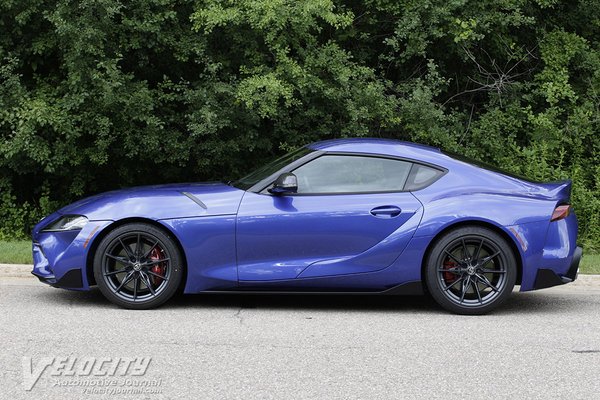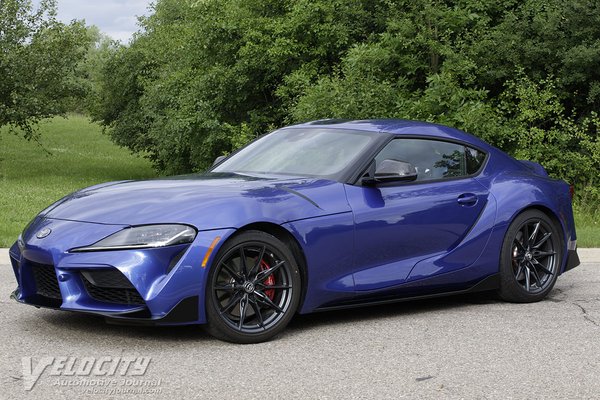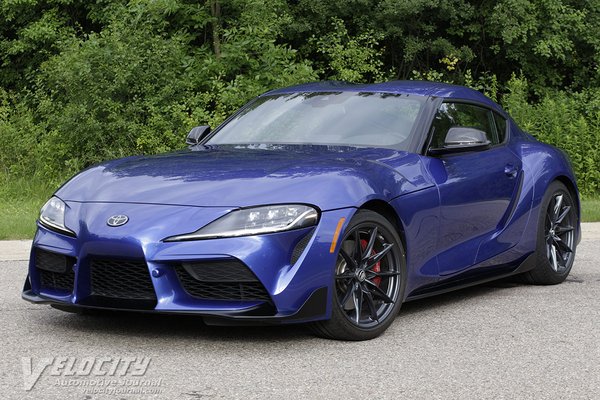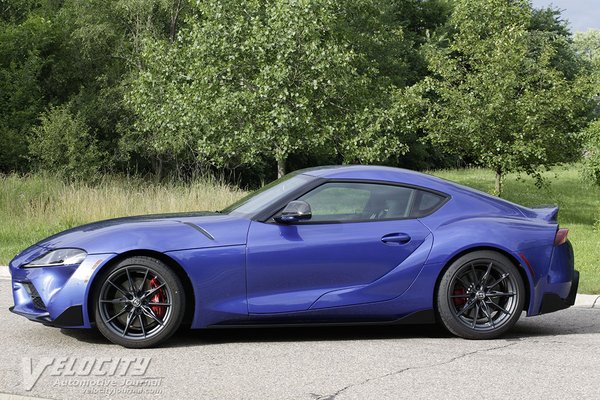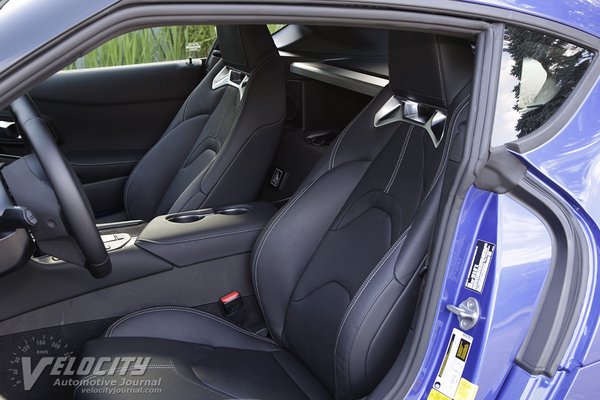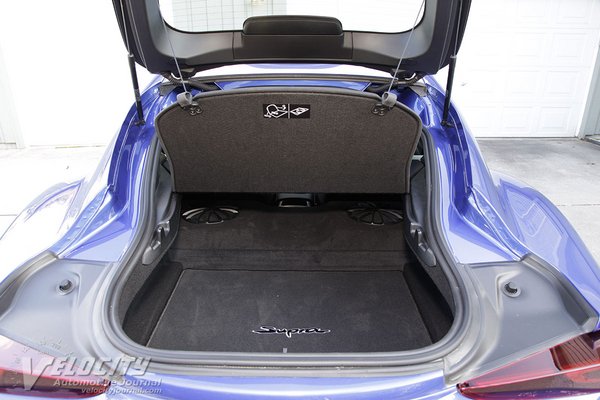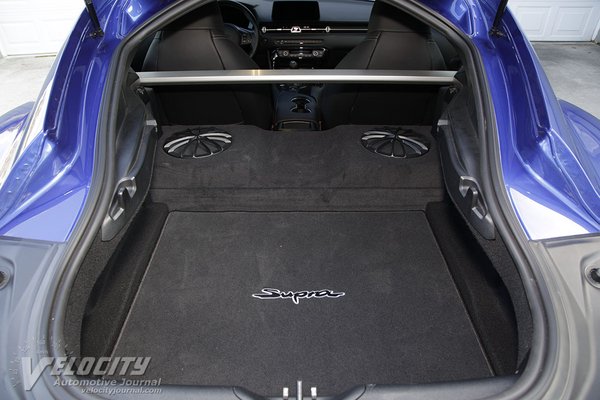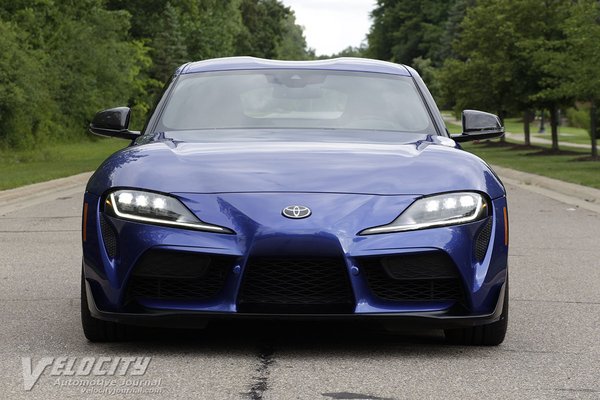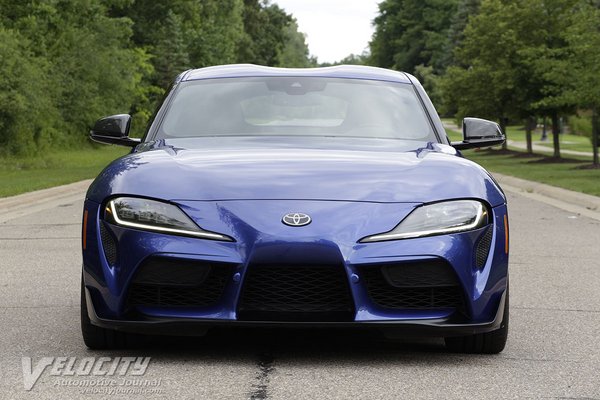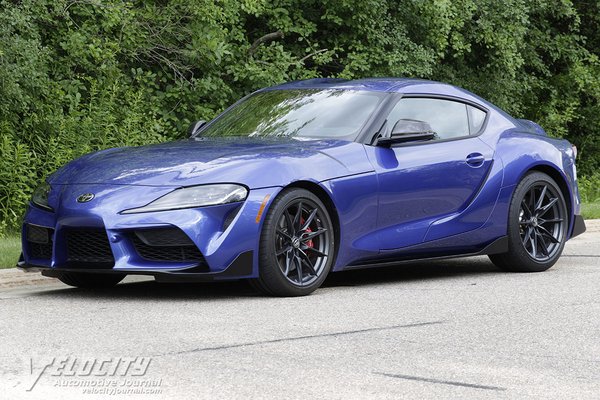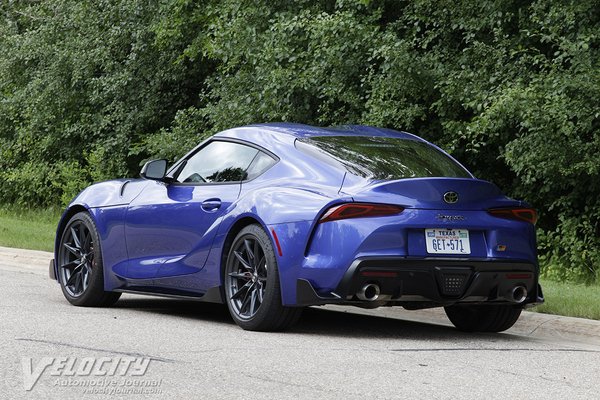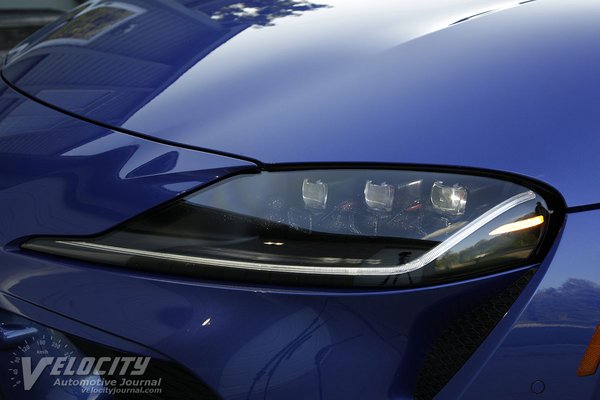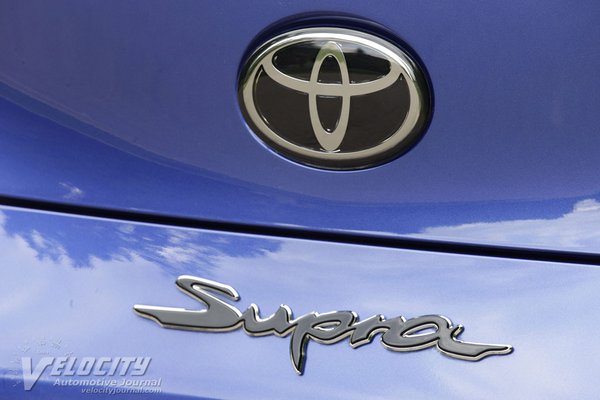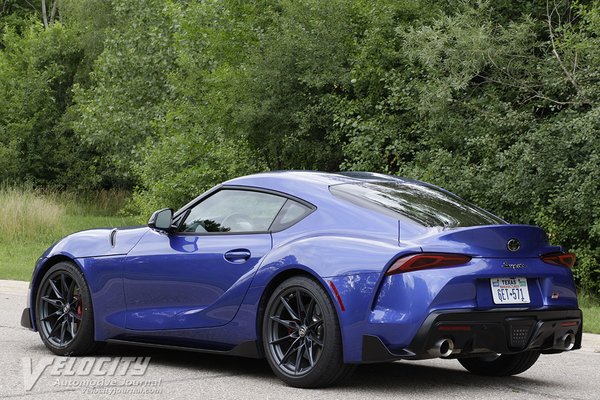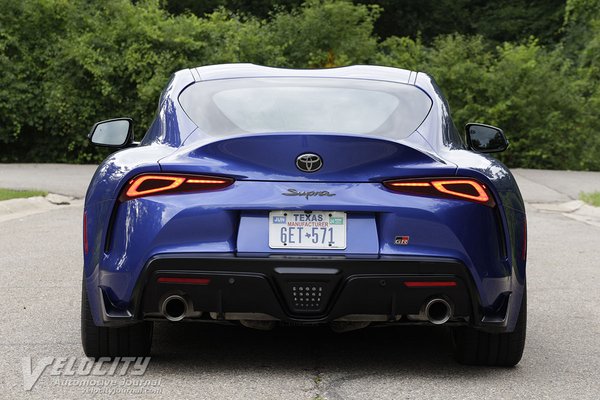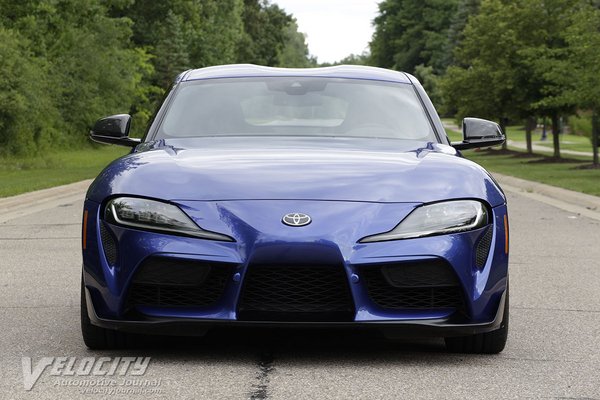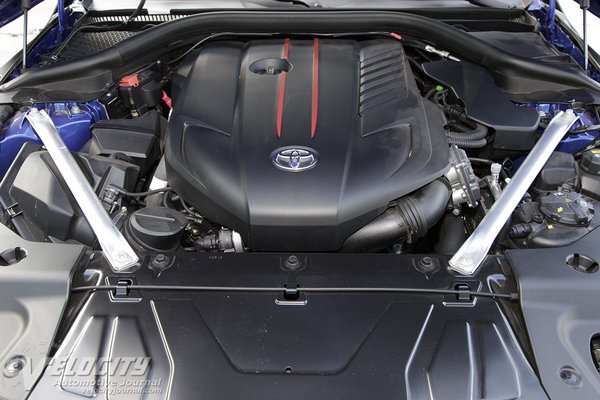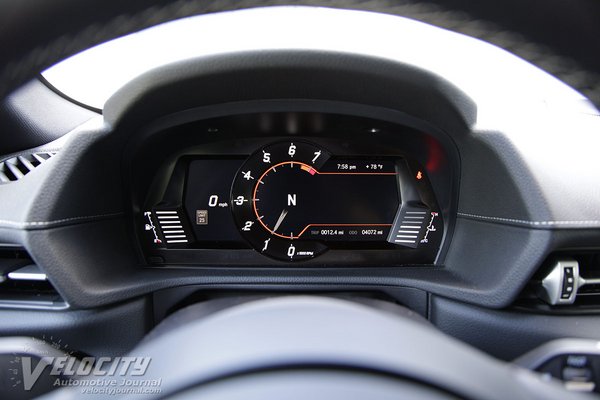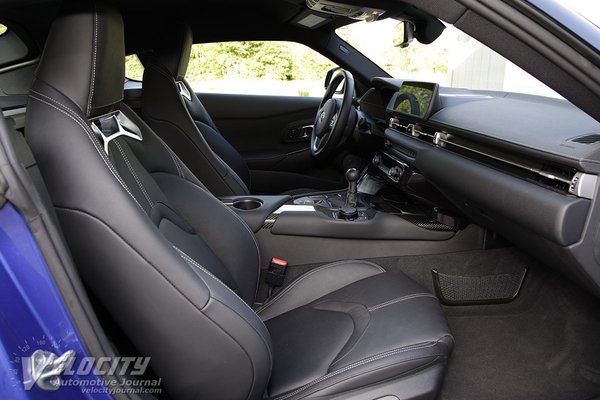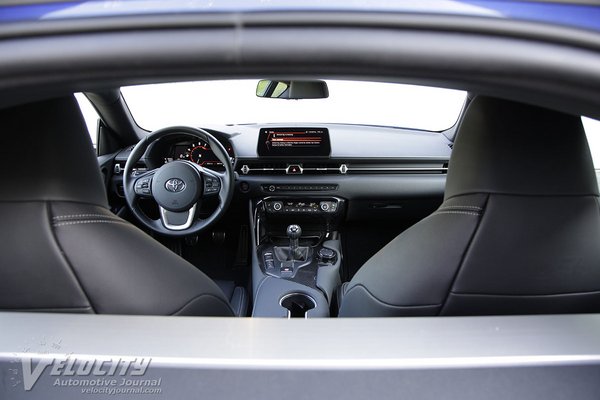2023 Toyota GR Supra 3.0 Premium
09/07/2023
Shahed Hussain
Since its introduction in 2020, Supra fans have been asking for a manual transmission and inline-6 combination. Originally only available with an 8-speed automatic, Toyota finally delivered a 6-speed manual in the 2023 GR Supra 3.0. Closely related to the BMW Z4, the GR Supra also shares its powertrain with the German convertible.
Toyota offers the 2023 GR Supra in four variants: 2.0, 3.0, 3.0 Premium and A91-MT. Pricing starts at $44,640 (2.0) and ranges up to $59,445 (A91-MT). For 2024, a new 45th Anniversary Edition GR Supra ($64,375) replaces the A91-MT. We tested a 2023 GR Supra 3.0 Premium ($56,750) equipped with the 6-speed manual, Stratosphere blue paint ($425), Driver Assist ($1,195), carbon fiber mirror caps ($925), and carpet cargo mat ($110). Adding the $1,095 delivery fee totaled up to $60,500.
Among the Supra's standard equipment are a digital instrument cluster, 14-way power seats, leather heated sport seats, carbon fiber interior trim, 19-in. forged alloy wheels, power folding exterior mirrors, head-up display, navigation, Apple CarPlay(R), 10-speaker JBL(R) audio system, and 8.8-in. touchscreen. Active safety technologies such as dynamic radar cruise control, blind spot monitor, parking sensors, and rear cross-traffic alert are standard.
The base 255-hp Supra 2.0 is outclassed by its Japanese and American competition that offer more power for less money. Supra enthusiasts will prefer the 3.0L inline-6 turbo, mated to an 8-speed automatic or a 6-speed manual (3.0L only). Sourced from BMW, the direct-injected, double overhead-cam six features variable valve-timing to crank out 382-hp @ 5,800-6,500 RPM and 368 lb.-ft. @ 1,800-5,000 RPM. The ZF manual transmission was specifically optimized to Toyota's specifications with a larger diameter clutch. A rev-matching capability (iMT) enables smoother shifts when changing gears. Toyota claims 0-60 MPH in 4.2 seconds for the 6-speed manual gearbox, or 3.9 seconds with the 8-speed automatic. Fuel consumption is an estimated 19/27 MPG (city/hwy.) with the manual. The 8-speed automatic is significantly more fuel efficient at 22/30 MPG (city/hwy.), due to its lower overdrive seventh (0.822:1) and eighth (0.640:1) gear ratios, and a lower final drive ratio: 3.15:1 (automatic) vs. 3:46:1 (manual).
The Supra's front suspension consists of MacPherson struts and stabilizer bar. At the rear is a multi-link setup with dampers, coil springs, and a stabilizer bar. The motor-assisted rack-and-pinion steering system is geared for a 15.1:1 ratio. Ventilated discs are at all four wheels: 13.7 in. dia. Brembo(R) 4-piston rotors (front) and 13.6 in. dia. single-piston rotors (rear). Staggered Michelin Pilot Super Sport tires are mounted on 19-in. forged alloy wheels: 255/35ZR19 (front) and 275/35ZR19 (rear). Instead of a spare tire, Toyota substitutes a puncture repair kit. The Supra 3.0 weighs in at 3,389 lbs. (manual) or 3,411 lbs. (automatic).
Despite the Toyota logo on the steering wheel, there is no mistaking the BMW influences in design and materials. The touchscreen and climate control system are typical BMW hardware, although the dashboard design is specific to the Supra. Aluminum and carbon fiber trim contrast with the predominantly black interior hues. The electronic gauge cluster consists of a central tachometer, digital speedometer, flanked by bar graph fuel and coolant temperature indicators. A short gear lever connects to the 6-speed manual gearbox. Next to the shifter is a multi-function dial and buttons to control the infotainment system. Dual cupholders are located within the padded central armrest. A USB port and 12V outlet on the center console can charge portable electronics. Interior storage space is limited to the glovebox and small door pockets. The rear hatch area can hold a couple of duffel bags and other soft luggage. As expected for a small coupe, exterior visibility is somewhat restricted due to the B-pillar location and tapered rear backlight glass.
The Supra's leather sport seats provide excellent lateral support and comfort, but larger occupants may find them confining. Both seats are powered, with the driver's position offering lumbar and side bolster adjustability. The tight confines of the cockpit extend to headroom: anyone over 5'-10" will need to lower the seating position to fit. In addition, the rearward sloping roofline requires caution when exiting to prevent hitting your head on the roof.
Toyota's engineers tuned the Supra's suspension for a compliant ride, befitting its grand touring mission. Although driving over broken pavement reveals that the low-profile Michelins trade some impact harshness for superior handling. The Supra responds immediately to steering input, lending a nimble feel expected considering its relatively light curb weight and compact proportions. Around curves, the suspension exhibits mild body roll and tracks accurately as the steering effort builds. We noticed significant acceleration squat at full throttle, likely due to the soft spring rates. Braking performance was superb with firm pedal feel and progressive actuation.
Although ZF optimized the transmission for the Supra, the shift lever feels isolated, so selecting gears is not as intuitive as we expected. Reverse gear is out of the H-pattern and requires depressing the gear lever to select; an operation we found unnecessarily slow to engage. Clutch engagement is progressive, so driving the Supra smoothly in city traffic was not difficult. However, even after a few days of acclimatization, we were disappointed that the ZF gearbox doesn't achieve the mechanical precision we anticipated.
As expected, the inline-6 delivers ample torque above 2,000 RPM, but isn't quite as responsive at lower RPM. Cruising on the highway in sixth gear, the turbo responds with immediate acceleration into triple digit speeds. At 85-90 mph, the Supra exhibits solid tracking and stability. Even at full throttle, the 3.0L six emits a pleasant burble that never becomes obtrusive. Wind noise is also subdued, but we noticed the Michelins are much quieter on asphalt vs. concrete road surfaces.
After having driven the manual gearbox-equipped Supra, we were surprised to find that we actually preferred the automatic for its superior usability. The 6-speed does deliver a more engaging experience, but at the cost of slightly slower acceleration. Despite our reservations, we applaud Toyota for listening to enthusiasts and delivering a Supra with a manual transmission.

